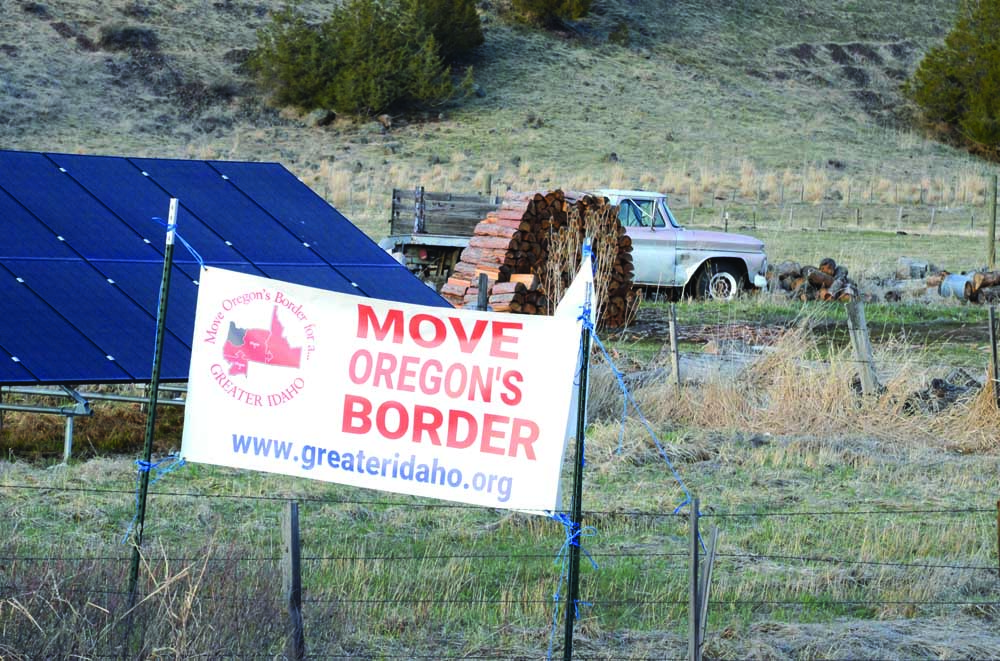Voice of the Chieftain: The big split that’s behind Greater Idaho
Published 2:00 pm Monday, April 8, 2024

- A sign just outside Enterprise reflects support for the Greater Idaho movement. An online debate on June 12, 2024 drew more than 125 participants to discuss the rural-urban divide in Oregon.
The Wallowa County Board of Commissioners last week sent a letter to political leaders in Oregon and Idaho urging that those leaders open discussions over the prospect of realigning the state border so that Wallowa County — and most of Eastern Oregon — becomes part of Idaho.
At the commissioners’ Feb. 28 discussion of the Greater Idaho issue, Susan Roberts suggested that she write the letter, and the other commissioners agreed. Roberts said it was her sense that many of her constituents, on both sides of the issue, wanted the commissioners to write such a letter. She said she didn’t believe writing the letter, which all three commissioners signed, contradicted their steadfast position of neutrality.
The letter was polite:
“On behalf of the citizens of Wallowa County, we are asking that you move this item forward to your respective bodies as soon as feasible for discussion,” it read in part. “We, as the governing body of Wallowa County, neither support nor oppose the measure, but only represent the will of the voters of Wallowa County.”
Those aren’t exactly fighting words — but, truthfully, if you were an elected official in a county that is as closely divided as Wallowa County appears to be on Greater Idaho, you would be wise to use exactly that sort of language if you were writing a letter on the topic.
“We’ll wait to see if we get a response,” Roberts said.
OK. But the letter seems unlikely to move the dial on Greater Idaho much, unless Gov. Tina Kotek runs into Idaho Gov. Brad Little at some governors’ conference, both breathlessly holding a copy of the letter, and find themselves unexpectedly in the mood to do a little horse trading on the spot.
However, there’s a broader picture to keep in mind here, and it threatens to get lost in the heat and dust that surround the Move Oregon’s Border movement.
As we’ve argued in the past (although reasonable people can disagree on this), the Greater Idaho movement isn’t really about redrawing the state border. It’s about the sense that the voices of Eastern Oregon are ignored in the halls of state government, that the values Eastern Oregonians prize are treated with little regard west of the Cascades.
There’s truth to that. But the real split here is between people who think it’s a lost cause and would prefer to throw in their lot with another state they think is a better fit for Eastern Oregon’s culture and politics and those who search for ways within the system to make sure their voices do matter in Salem.
Every proponent of Greater Idaho admits that it’s a hard lift. No argument here.
But you know what else is work? Being a functioning member of a democracy. Voting. Thinking about the messages you send with your votes.
In that light, consider the May 21 primary for state Senate District 29, the seat that was held by the retiring Bill Hansell. Hansell, a Republican, always was a member of the minority party during his time in the Senate. But he still won a reputation as an effective legislator — a respected voice for Eastern Oregon. In part by being willing to reach across the aisle, he made sure he wouldn’t be sidelined.
The winner of the Republican primary for Senate District 29 is a good bet for election to the seat in November, since no Democrat is in the race. So voters would be well-advised to ask this question of the GOP candidates: How will you make sure the voices of Eastern Oregonians will be heard in Salem?
Until the day comes when Wallowa County and Eastern Oregon are absorbed into Idaho, that’s the discussion we need to have — and keep having.




